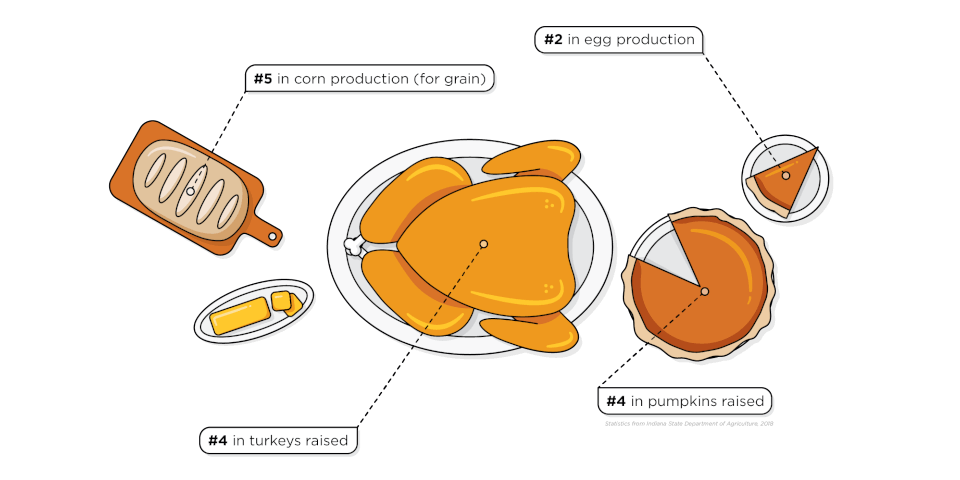What would Thanksgiving look like without Indiana?
Imagine a cornucopia of Thanksgiving goodness--pumpkin pie, cornbread, stuffing, flaky bread rolls--all flanking the culinary linchpin: the turkey. Without Indiana much of this bounty would not be readily available at Thanksgiving or, indeed, any other time of the year.
“It is hard to imagine a Thanksgiving meal that doesn’t have some ties back to Indiana agriculture,” Jayson Lusk, department head and distinguished professor of agricultural economics, said. “Indiana is a top ten agricultural producer in the U.S.”

Indiana is also a top five producer of several Thanksgiving staples. Indiana is second in the nation in egg production, fourth in pumpkins and turkeys and fifth for corn grain and hog production. The state is also a major dairy producer, with an estimated 187,000 dairy cows. Green beans, tomatoes and sweet corn, commonly found in favorite holiday side dishes, are also specialty crops grown throughout Indiana. The diversity of Indiana’s farming profile is actually rooted in one of the lesser known legacies of the pilgrims.
“One interesting component of the Thanksgiving story you don’t often hear about is that when the pilgrims first arrived they started farming with community owned plots,” Lusk said. “That didn’t work out so well because there were no incentives for individuals to work hard when it didn’t directly benefit them. This is sort of where our bountiful food system came from because it forced people to experiment on their own plots and figure out what gave them a comparative advantage. In a way, the story of Thanksgiving is really one of free enterprise.”
Thanksgiving is a great holiday, Lusk continued, because it elevates so many different dishes, offering farmers an incentive to diversify their crops, which is beneficial economically and ecologically. Knowing that Thanksgiving always brings with it certain gastronomic demands means farmers can confidently grow more specialty crops like pumpkins.
“One of the signals of a healthy diet is a diversified diet,” Lusk said. “I think the Thanksgiving meal represents that diversity both for consumers and producers.”





